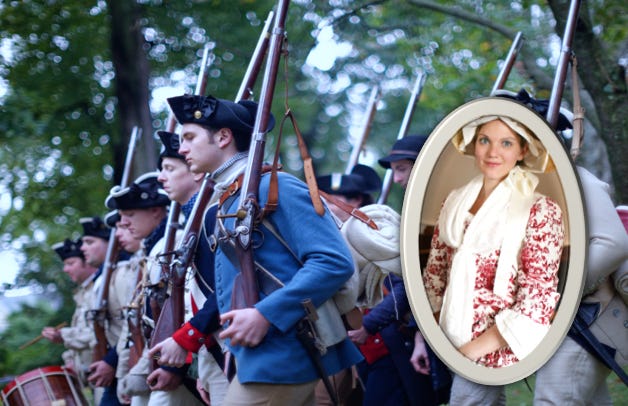Untold Stories: Charity Ferris, Unsung Heroine of the Battle of Throgs Neck
There are so many inspiring, beautiful stories about the great heroes of American history which are scarcely ever told. One happens on them accidentally—buried in a thick, out-of-print biography, in small print on a museum sign, casually and fleetingly mentioned in an obscure educational video. America cannot return to greatness in the future if we do not truly understand the greatness of our past. That is why I am writing an article series to tell a few of these little-known but moving or illustrative “untold stories” of American greatness.
Previous articles in this series have included the remarkable life of the slave turned Patriot double agent James Armistead Lafayette, the story behind the “Battle of Princeton” painting by America’s first deaf artist William Mercer, Abraham Lincoln’s moving meeting with the freed slaves in Richmond, how George Washington single-handedly stopped dangerous infighting in the American Revolutionary army, and the story of the first Native American Indian university graduate, Caleb Cheeshahteaumuck. Today’s story is about a Patriot wife and mother who bravely fought British invaders during the American Revolution—with her wits instead of with guns.
In the chapter of The Indispensables titled “The Forgotten Battles That Saved Washington’s Army,” Patrick K. O’Donnell describes the Oct. 1776 Battle of Throgs Neck, New York. The Americans were fighting for the very survival of their cause as the British, with their superior forces, sought to stamp it out. Among the stories of heroism that day is that of a civilian and a woman.
“The British landed near the estate of James and Charity Ferris, who owned a mansion at the tip of the peninsula. James had fought for the Patriots, and the British captured him and sent him to Sugar House Prison in New York, where he would spend the next five years. His wife, Charity, also strongly supported the cause of the Revolution, and this intrepid, unsung heroine would play a minor role in the battle.
Before invading, the British ships commenced naval gunfire support against Throgs Neck. According to legend, Mrs. Ferris bravely walked back and forth on her veranda during the attack until the Royal Navy, perhaps not wanting to kill a civilian woman, ceased fire.”
O’Donnell notes that the British may also have stopped because they had “completed their preparatory cannonade,” but Mrs. Ferris’s actions were undoubtedly impressive. Her bravery did not stop there, however.
“After disembarking, the Redcoat officers occupied the Ferris mansion, and although she secretly spirited her daughters out of harm’s way by sending them with an enslaved servant who rowed them across the sound by night, she remained behind to cook for the men—and, according to legend, gather intelligence. She instructed her young servant to memorize every word he heard the officers utter as he waited on their table or ran into town on errands for them. He faithfully repeated all he heard to Mrs. Ferris, who then immediately sent the information on to [George] Washington.”
The intelligence and courage of both Mrs. Ferris and her servant, who could have been imprisoned or even possibly killed had their actions been discovered by the British, deserve great praise.
Nor were their efforts in vain. British Gen. Howe, after multiple unsuccessful attempts to “traverse the bottleneck” the Patriots had created, ultimately had to adjust his plans and sail to a different landing spot with his soldiers. “The Americans halted an amphibious landing—an exceptionally rare occurrence in history.” The historic Patriot success was important in preventing the destruction of George Washington’s Revolutionary army. And Mrs. Ferris demonstrated that it took not only the patriotism, ingenuity, and courage of military men to fight the Revolution, but those qualities from American women, as well.




